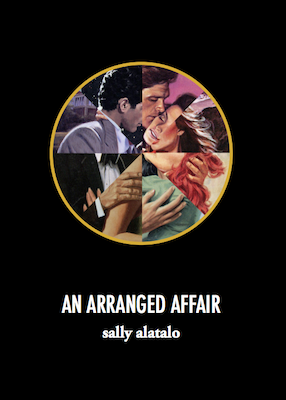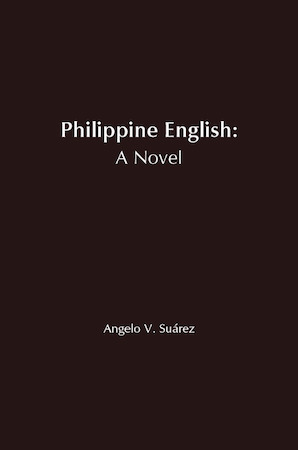Over the past decade, I worked on a novel, The Nature Book, made entirely out of nature descriptions from 300 other novels. I searched for patterns in how authors behold, distort, and anthropomorphize nature and gathered them into a seamless narrative, using no words of my own.
Halfway through writing this book, I wondered: “Is there other fiction made out of found language?” I searched for precedent and found quite a bit—much more than you’d expect for a genre that seems allergic to such an act, often calling it plagiarism.
But the texts I found challenge this designation. If you wear your borrowing on your sleeve, if you make it clear that you’re using other people’s words, you can achieve something else entirely. These novels and short stories recontextualize found language to interrogate textual artifacts of the past and present, often critiquing worn tropes, questionable traditions, and problematic systems. All while creating new narratives in the process.
My research showed that fiction made partially out of found language—or “citational fiction,” as I call it—goes back as far as the writings of Medieval Arabic author Al-Jahiz of Basra and the anonymous Chinese epic The Plum in the Golden Vase. Novels and short stories made entirely out of found language, or “literary supercuts,” didn’t appear until the mid 20th century with the writings of J.G. Ballard, Konrad Bayer, and William S. Burroughs. But even before the 20th century, a handful of novels included short strings of found language, which I also think of as supercuts.
Below, I’ve gathered 10 of my favorite literary supercuts from the past 200 years, from the extracts of Moby-Dick, the first instance of an novelist stringing tens of quotations together, to Kathryn Scanlan’s Aug 9 – Fog, one of the latest supercuts to hit bookstores.
Moby-Dick: Or, the Whale by Herman Melville
Melville’s epic is best known for its brilliant language and encyclopedic scope. It should also be known for including the first literary supercut. A few pages before “Call me Ishmael,” you’ll find two surprising “Etymology” and “Extracts” sections containing 82 found whale descriptions. Across 13 pages, Melville presents a chronological archive documenting how writers have rendered whales into words over thousands of years, from The Bible to Shakespeare to Hawthorne. Reminiscent of “commonplace books,” those notebooks of quotations common to pre-modern European households, this lengthy whale supercut sets the mood for the obsessive nautical story to come.
The American Claimant by Mark Twain
Forty years after Moby-Dick, Twain published the second-known supercut. The American Claimant begins with a note to the reader, stating that “no weather will be found in this book.” He elaborates: “Nothing breaks up an author’s progress like having to stop every few pages to fuss-up the weather.” If the reader wants weather, they can flip to the back of the book from time to time and read absurd, humorous descriptions from pulp writers, poets, and The Bible. The novel itself blends satire, science fiction, and romance and was composed in a non-traditional fashion: spoken by the author into a dictaphone and then transcribed into print.
The U.S.A. Trilogy by John Dos Passos
A century before The Daily Show compiled TV news fragments into supercut parodies, Dos Passos was cutting up newspaper clippings into his own form of cultural commentary. This trilogy, which tries to capture “the speech of the people” in the first three decades of the 20th century, is interspersed with “newsreel” sections, made of found newspaper copy as well as song lyrics and advertising slogans. Reading like a cross between Dadaist poetry and scrapbooks, these sections narrate the cultural history of the United States while interrupting the fictional narrative with the primary documents and real-life tumult of the era.
Talk by Linda Rosenkrantz
The first entirely found-language novel on this list, Talk is made entirely out of dialogue recorded by the author over the course of one summer. Rosenkrantz followed her friends around with a tape recorder and transcribed everything into a 1,500-page document. She then spent two years editing it down into a 28-chapter novel told in the form of a dialogue between three friends—like The American Claimant, there is no weather or even descriptions of places in this novel unless they appear in the dialogue. Written in the mid-60s, the book is a story of friendship, love, and loss as well as a time capsule of queer life, art world gossip, and popular culture of the time.
Don Quixote, Which Was a Dream by Kathy Acker
Acker is well known for her remixing of others’ texts and titles. Along with this novel, she wrote Great Expectations, which begins with the first paragraph cribbed from Dickens’s classic. Blood and Guts in Highschool contains a full summary of Nathaniel Hawthorne’s The Scarlet Letter and language by Jean Genet. What sets Don Quixote apart from other supercut texts is its musical use of found language. As Chris Kraus points out in After Kathy Acker, her repetition of full paragraphs from de Sade’s Juliette creates a kind of erotic, minimalist, verbal music reminiscent of the early work of Steve Reich and Philip Glass.
Memory of Fire trilogy by Eduardo Galeano
The most epic of supercuts, Galeano’s Memory of Fire chronicles the history of the Americas through primary documents, from historical accounts to newspaper clippings to the writings of Jorge Luis Borges, Che Guevara, and Juan Rulfo. Part 1, Genesis, is split into two sections: pre-Columbian life told through stories and creation myths of native peoples followed by the violent arrival of European colonialists. Part 2, Faces and Masks, documents the eighteenth and nineteenth centuries, and Part 3, Century of the Wind, chronicles 1900 through 1984. The only citational text that nears Galeano’s trilogy in scope is one of the first ever published: the Han Shu, written between 82 and 111 AD by Ban Biao, Ban Gu, and Ban Zhao, a history of the Han dynasty consisting almost entirely of quotations.

An Arranged Affair by Sally Alatalo
Alatalo made two versions of this book. In A Rearranged Affair, she took 188 different romance novels, physically pulled them apart, and recollated every page of every book into an edition of 188 new novels. Because of the romance genre’s strict conventions, Alatalo was able to maintain a fairly cohesive narrative throughout each of these books, even if character names and settings changed rapidly. In An Arranged Affair, written almost 30 years later, Alatalo digitized one of these books, retyping it so that each found narrative flowed seamlessly from one to another.
Woman’s World by Graham Rawle
Woman’s World takes the cut-and-paste aspect of supercuts literally: appearing at first glance like a ransom note or visual poem by Bern Porter, it is composed of 40,000 text fragments clipped from 1950s women’s magazines. To write it, Rawle penned the narrative by hand and then searched these magazines for sentences and paragraphs that corresponded to his narrative, shifting scenes, descriptions, and other aspects of his original story to conform to the constraints of his source material. Fusing form and content in a visually and conceptually striking fashion—at one point, a picture of a train cuts through a chapter set on a train—Woman’s World tells the story of Roy, his sister Norma, and Norma’s plight trying to live up to society’s impossible ideals of femininity, rounded out with a queer twist.

Philippine English: A Novel by Angelo V. Suarez
Unlike the other supercuts on this list, Suarez employs little creative license with his source material. He simply took a dictionary used for compulsory English education classes in the Philippines, where he lives, and retyped the example sentences verbatim in the order they appear. What results at first seems like a disjointed sequence of micronarratives until a picture of the dictionary’s underlying colonialist, Western perspective begins to appear, revealing the ideology that this educational text seeks to impose on its readers. Suarez’s strict chronological process also produces humorous mashups: “The criminal is said to be living under an alias in South America. Superman, alias Clark Kent.”
Aug 9 – Fog by Kathryn Scanlan
Drawn from a diary Scanlan found at an estate sale, this novel narrates a year in the life of a rural Illinois octogenarian in the late ’60s. In an author’s note, Scanlan describes the process of editing and reworking the diary not as ventriloquism, but as a fusing of her voice with the words and syntax of the diarist: “I don’t picture her. I am her.” Oscillating between two and twenty words on each page, the narrative is so compressed and the images and scenes so specific and strange that the smallest, most quotidian things appear monumental: grass poking out of the ground in spring, airplanes flying high over head, “big snow flakes like little parasoles upside down.” It’s the closest fiction can get to poetry.
The post 10 Novels that Borrow, Sample and Remix Found Texts appeared first on Electric Literature.
Source : 10 Novels that Borrow, Sample and Remix Found Texts














